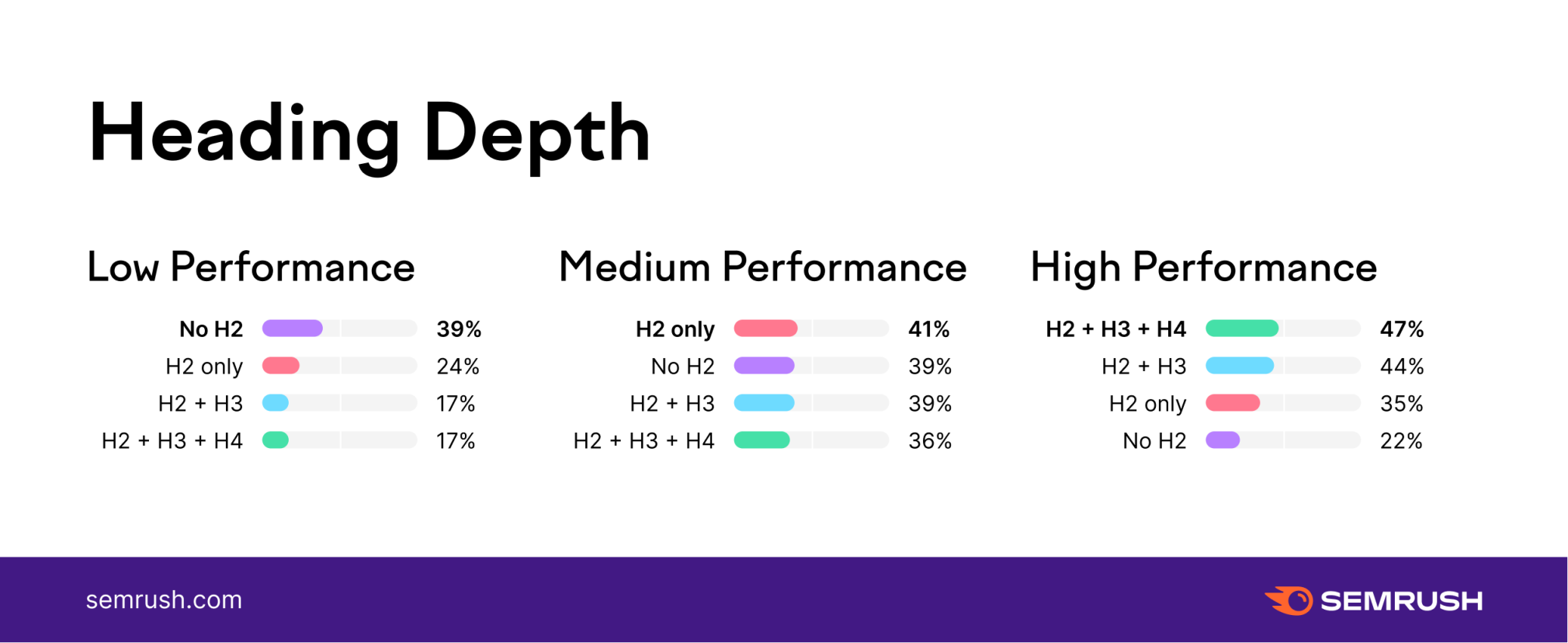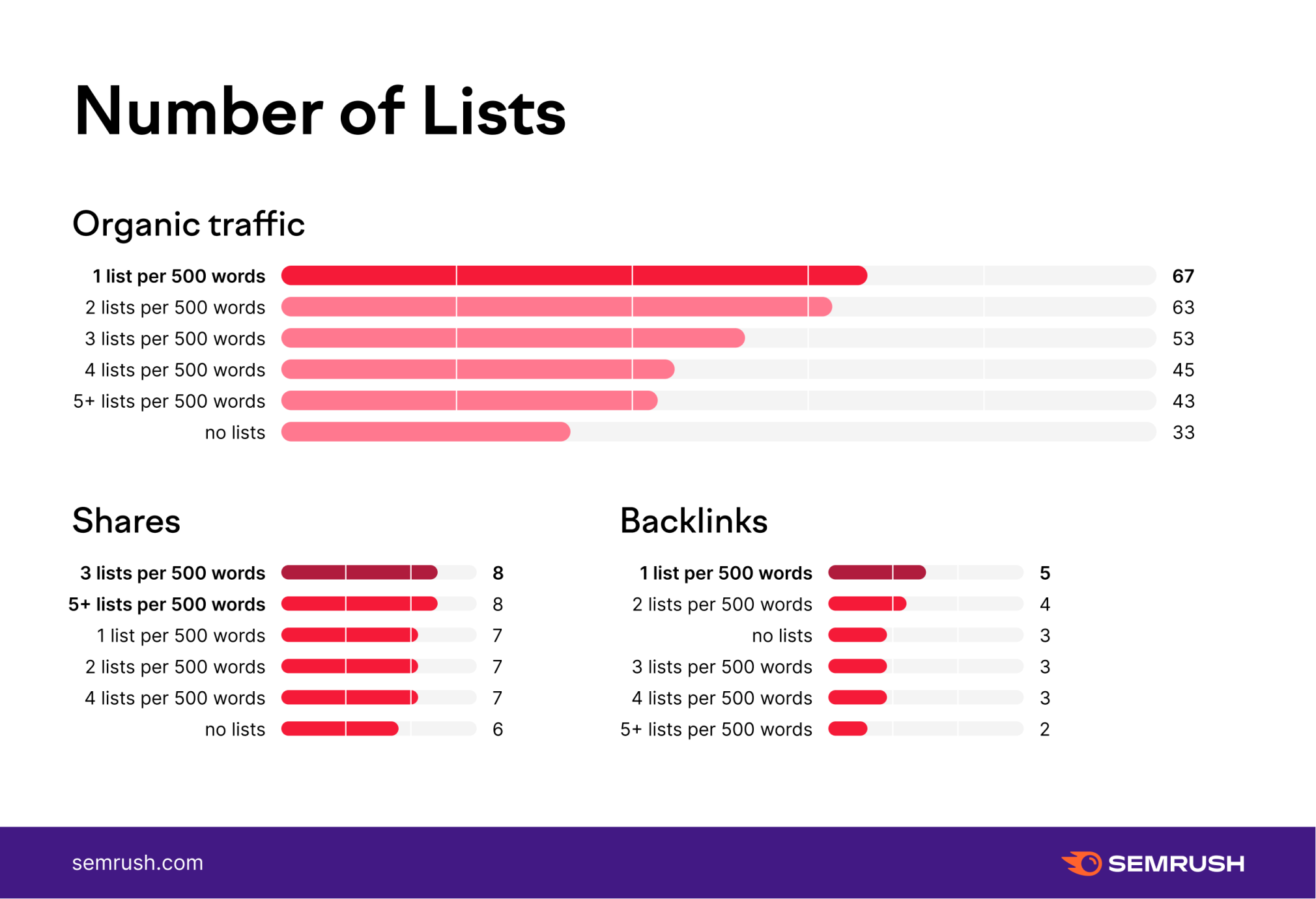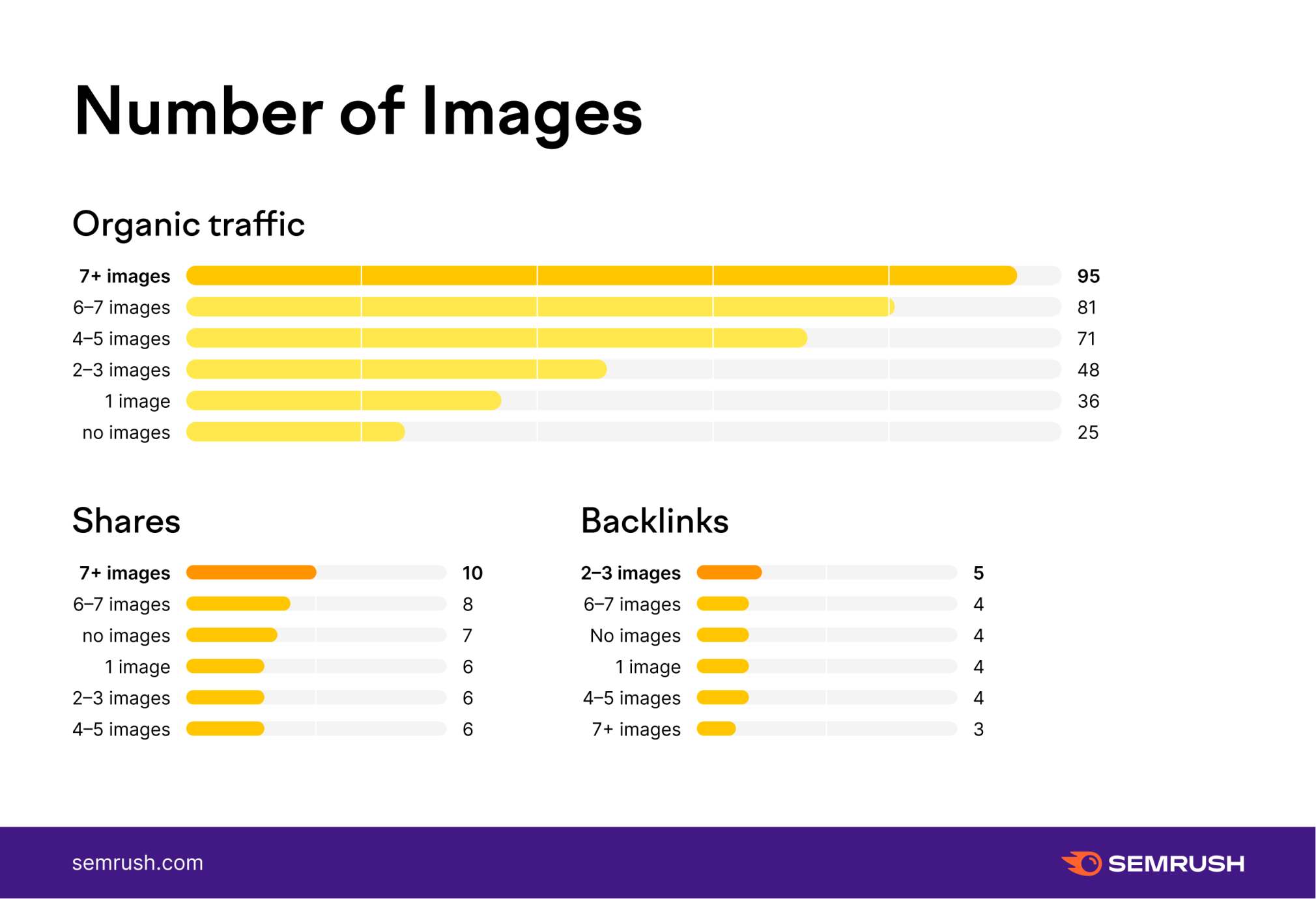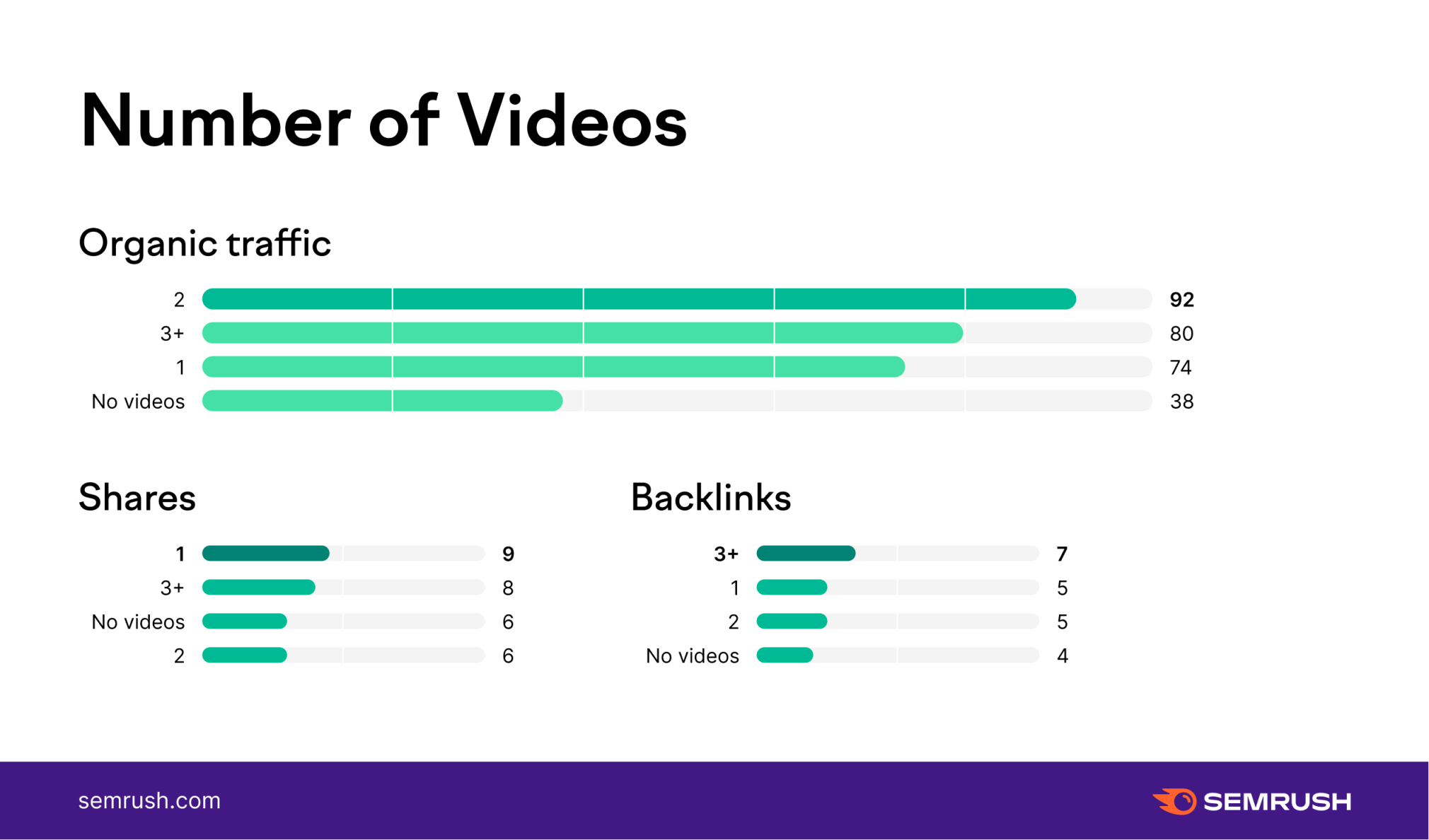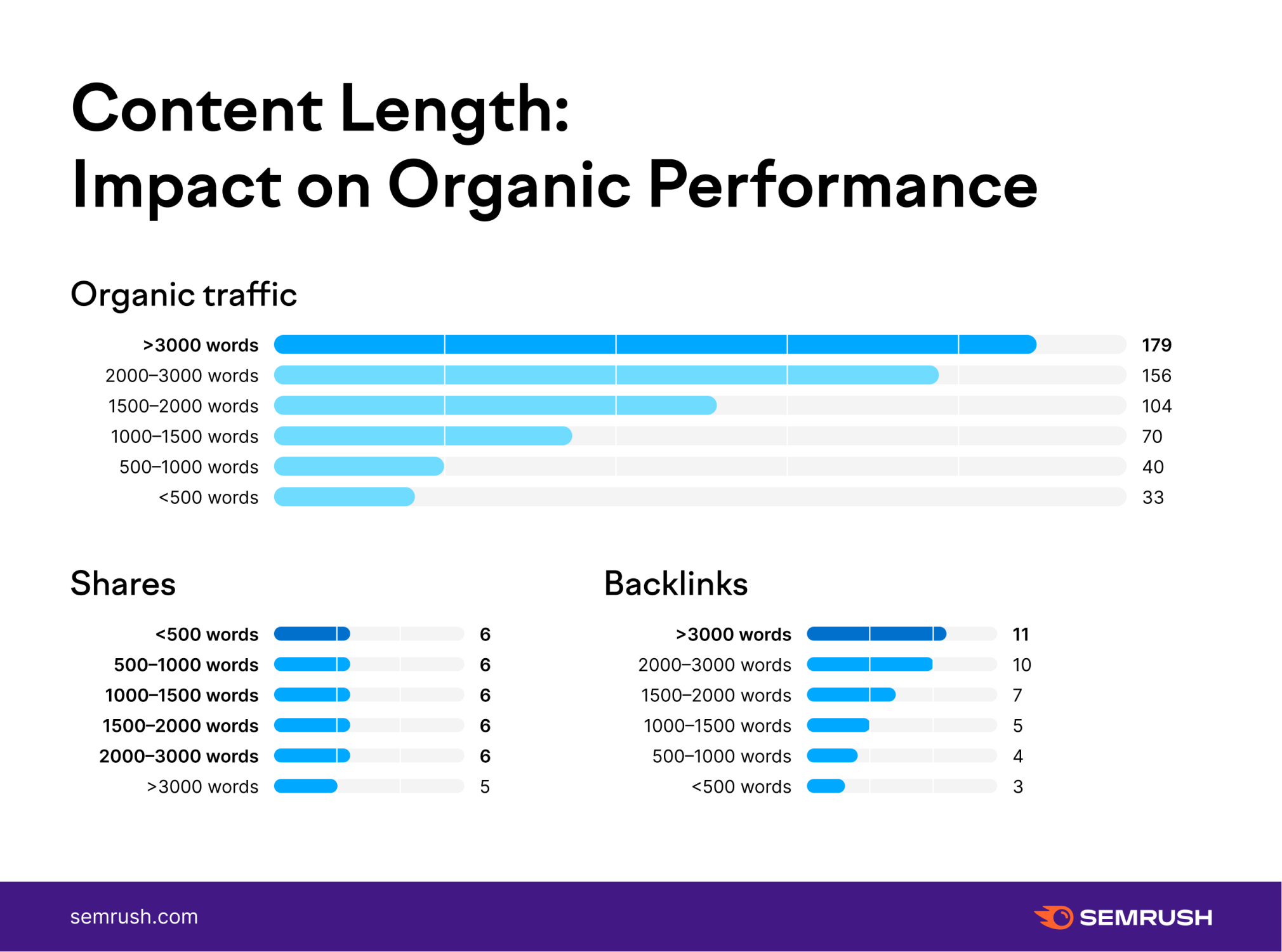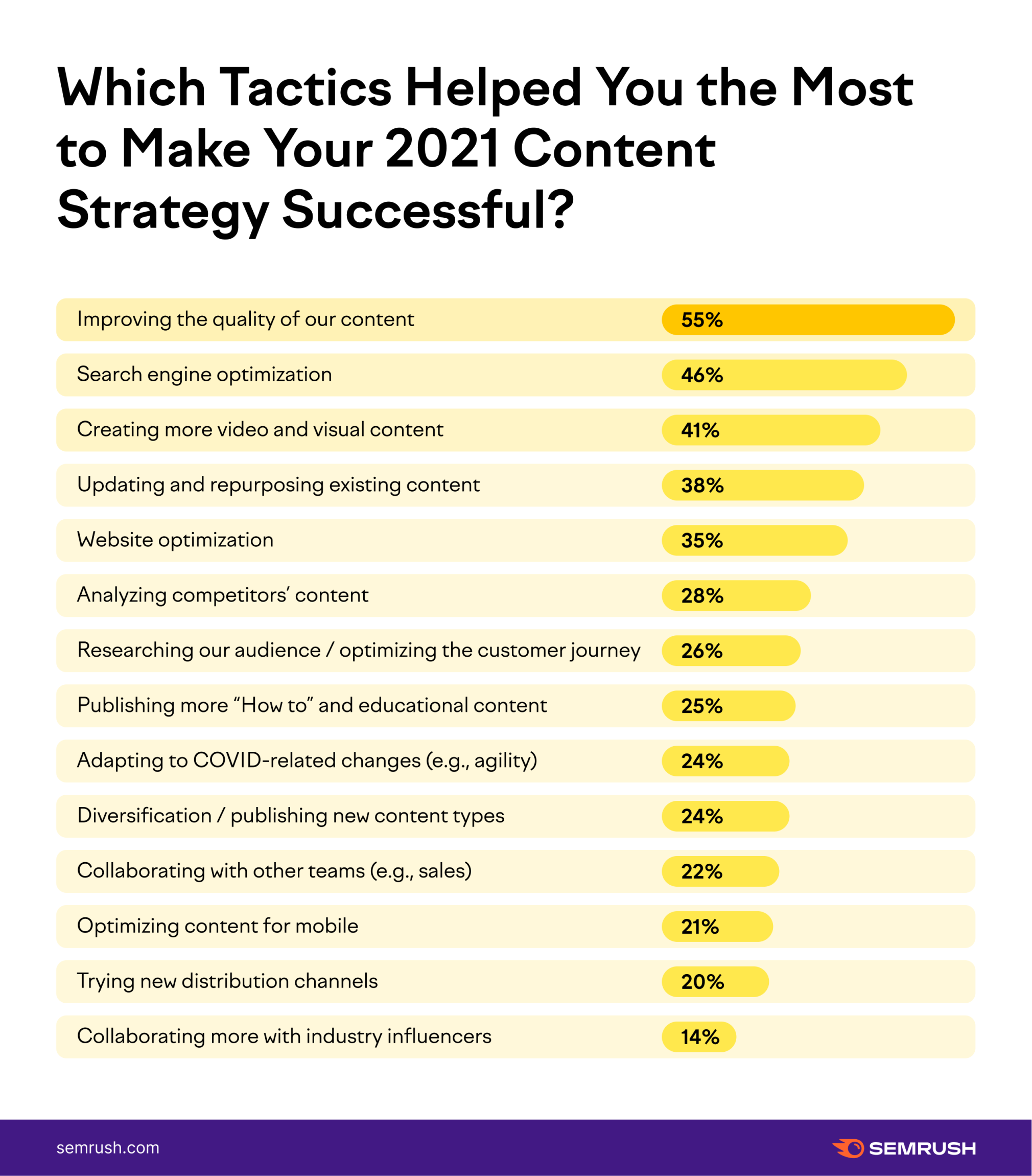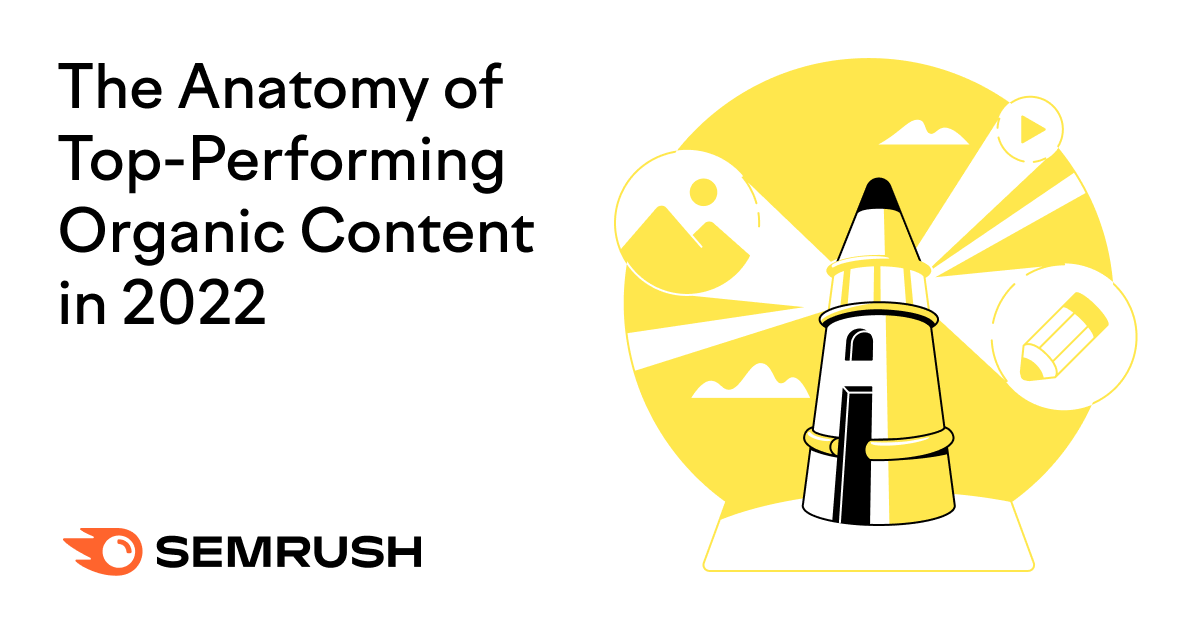
Originality, relevance, and knowing your audience are core considerations for making engaging content, though myriad criteria such as length, visual elements, and technical factors play important roles in the formula for content marketing success.
That’s where our research comes in. Focusing solely on organic traffic, we analyzed the visits, backlinks, and Facebook shares of 500K high-performing blogs that had 30-500K monthly views in 2021 to uncover several revealing patterns and characteristics. In our State of Content Marketing 2022 Global Report, we share several key factors for content creators to consider when designing and producing their content in 2022. In particular:
- Headlines (types, H1 length, and specific word choice)
- Structure (heading depth, list presence, and overall complexity)
- Visual content (the presence of images and video in numbers)
- Article quality and topic coverage (considerations for user intent, article length, and offering unique value)
Our research takes a generic approach to analyzing the data behind top-performing organic content. While our research cannot confirm that these findings are applicable and hold true for every industry, they serve as insightful guidelines that content marketers can apply to their strategy for 2022.
Headlines
What’s in a headline? Everything! The headline is the first opportunity you have to hook a reader, give them an idea of what to expect, and even give them a sense of your brand voice and tone in writing.
Headline Types
Depending on the type of content you’re creating, the type of headline you use can make a big difference in the visibility and click-worthiness of your article. In our study, we found that several headline types such as guides and how-tos, tend to garner more organic traffic, as well as shares and backlinks.
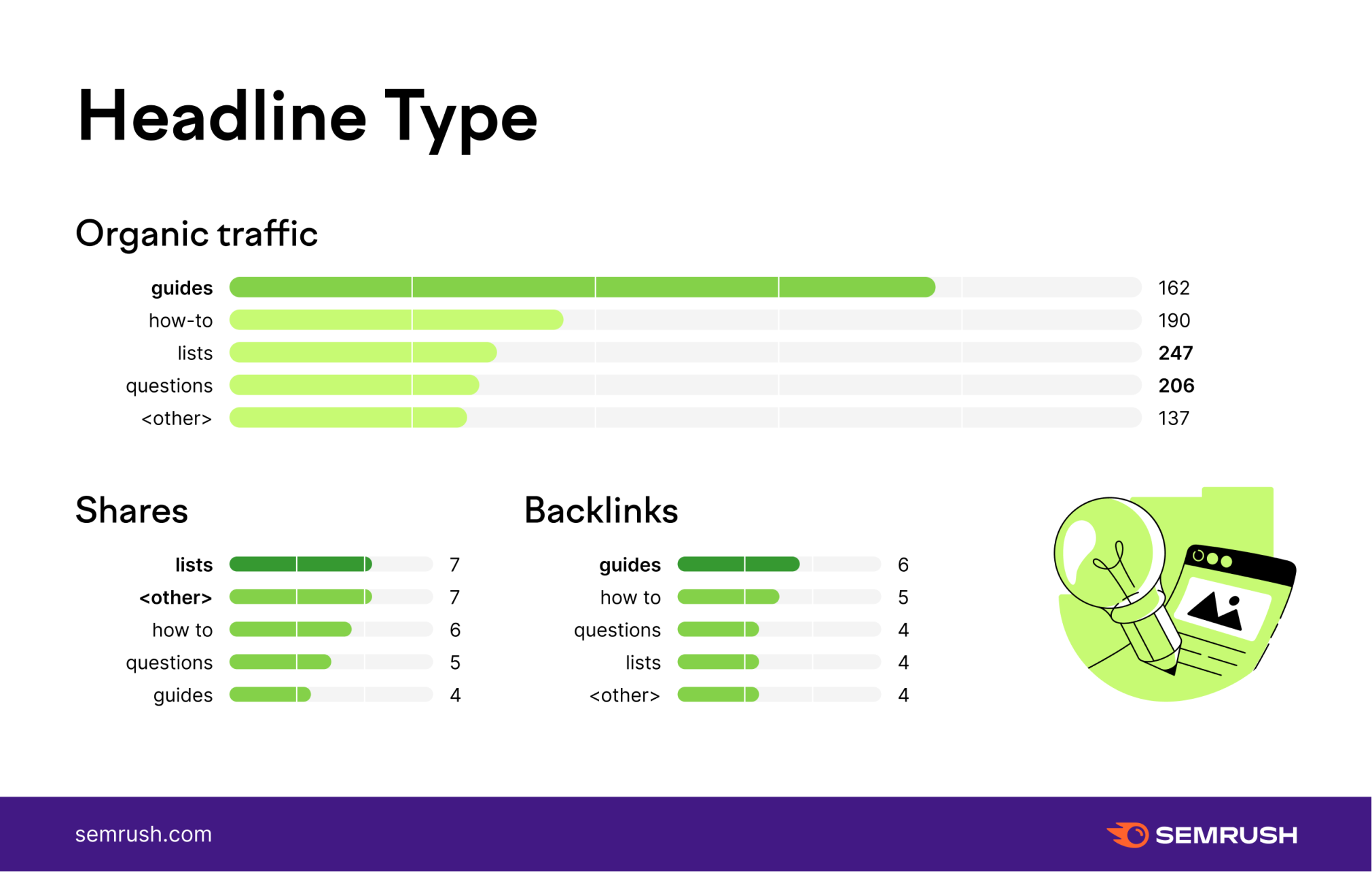
Key takeaway: Readers love guides and structured articles that give them answers to their questions. Titles with the word “guide” attract three times more organic traffic, and how-tos outperform by 1.5 times. Try implementing these headline types into your content to provide value and visible answers to readers’ burning questions.
H1 Length
While your H1 is meant to hook and introduce your topic, it’s also critical to take the length into consideration.
We compared H1 length against the average monthly organic traffic, the number of social shares (Facebook), and the number of backlinks the article had. Because we focused on organic traffic, note that headlines on the search engine page results (SERP) favor shorter lengths to avoid truncation. Headlines for blogs, however, can be differentiated from the meta titles appearing in search and can sometimes perform better at longer word lengths.
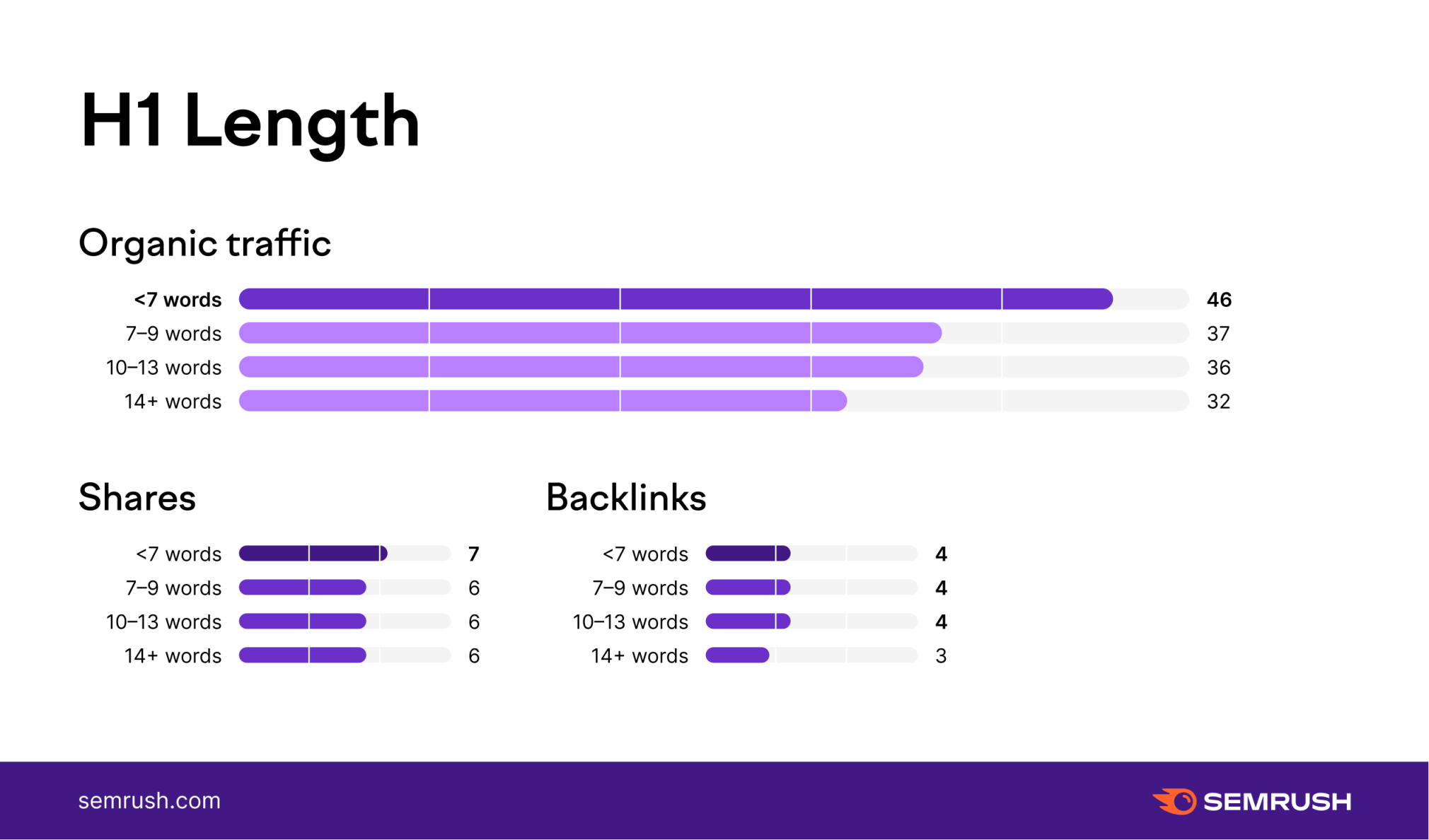
Key takeaways:

